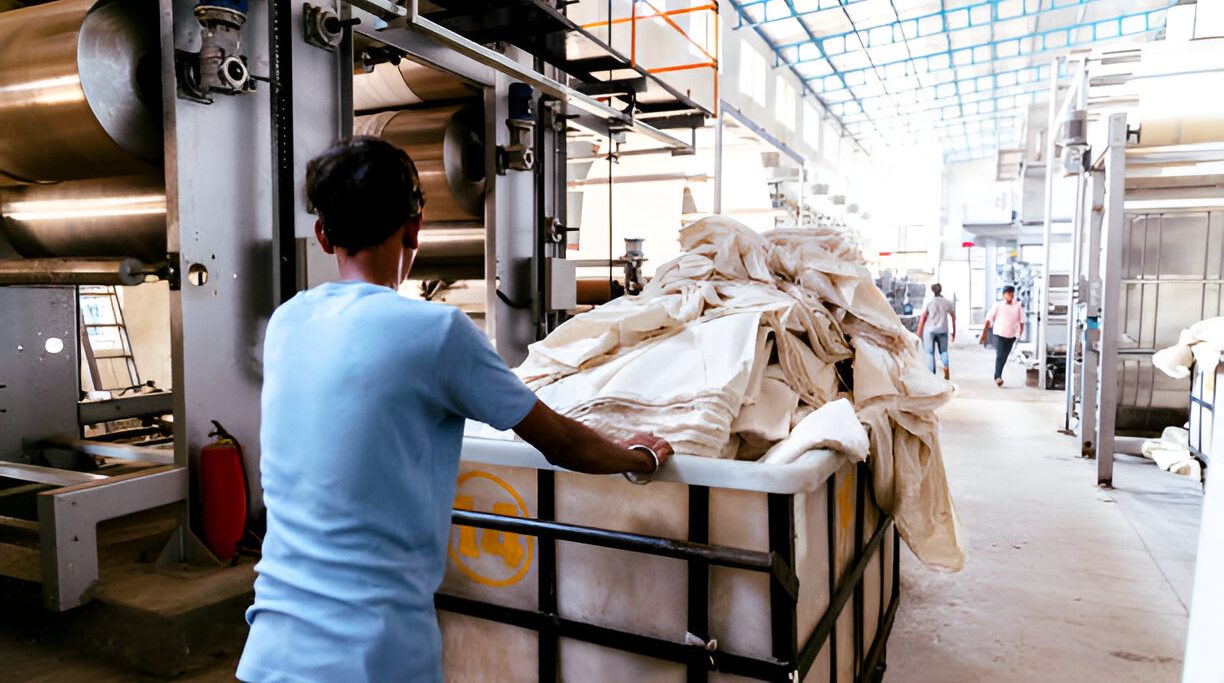When winter approaches, most people reach for fleece jackets and sweatshirts, assuming fleece equals polyester. But the truth is, fleece refers to the texture of a fabric, not the fiber it’s made from. And when it comes to softness, breathability, and sustainability, cotton fleece offers a natural alternative worth considering.
What Is Fleece, Really?
“Fleece” describes a fabric finish, where the inner side of a knit fabric is brushed to create a soft, fluffy texture that traps air and keeps warmth in. This brushing technique can be applied to different types of fibers, whether they are synthetic like polyester or natural like cotton.
Cotton Fleece: Softness and Warmth from Nature
Cotton fleece starts as a knitted cotton fabric, often in sweatshirt or French terry structure. The inner side of the fabric is brushed to lift the fibers and create that familiar fleece softness. This process produces a fabric that’s warm yet breathable, making it an ideal choice for everyday winter wear.
Benefits of Cotton Fleece:
Naturally breathable, allowing your skin to stay cool indoors. Gentle on sensitive skin, especially for those with eczema or allergies. Absorbs moisture, helping regulate your body temperature without the clammy feel. Eco-friendly and biodegradable, leaving a smaller environmental footprint than synthetic alternatives. Soft and cozy, making it perfect for loungewear, hoodies, joggers, and children’s wear.
Why Switch to Cotton Fleece This Winter?
Polyester fleece has its place in activewear and outdoor sports gear, thanks to its moisture-wicking properties. However, for daily winter wear, cotton fleece offers a more natural, comfortable, and skin-friendly alternative. Cotton fleece is particularly well-suited for: People with sensitive skin or eczema, who often find synthetic fabrics irritating. Children’s wear, where gentle and chemical-free fabrics are preferred. Lounge and casual wear where comfort is more important than high-performance moisture wicking. Eco-conscious shoppers seeking biodegradable fabrics rather than plastic-based synthetics.
Fleece Myths: Clearing the Confusion
Many people think fleece refers to polyester, but that’s not true. Here’s what most don’t realize: Fleece is a finish, not a fiber type. Any knit fabric, when brushed, can become fleece. Cotton fleece is more breathable than polyester fleece, making it great for indoor use or mild climates. Cotton fleece absorbs some moisture rather than repelling it like polyester, helping to balance your body temperature. Cotton fleece is biodegradable, while polyester is plastic-based and non-biodegradable. For people with skin allergies, cotton fleece is often a safer, more comfortable choice.
The Sustainable Side of Cotton Fleece
Choosing cotton fleece over polyester is also a step toward sustainability. While polyester is made from petroleum-based plastic and takes hundreds of years to break down, cotton is a renewable, plant-based fiber that decomposes naturally. When organically grown and responsibly manufactured, cotton fleece is one of the most environmentally friendly fabric choices for winter clothing.
Choosing the Right Fleece for You
When selecting your winter wardrobe or designing your brand’s clothing line, remember that polyester fleece is not your only option. Cotton fleece offers the same cozy softness, but with added breathability, better skin compatibility, and a lighter environmental impact. So, this winter, whether you’re bundling up your little ones in soft joggers or pulling on a comfy hoodie at home, consider cotton fleece as your natural choice for warmth without compromise.



